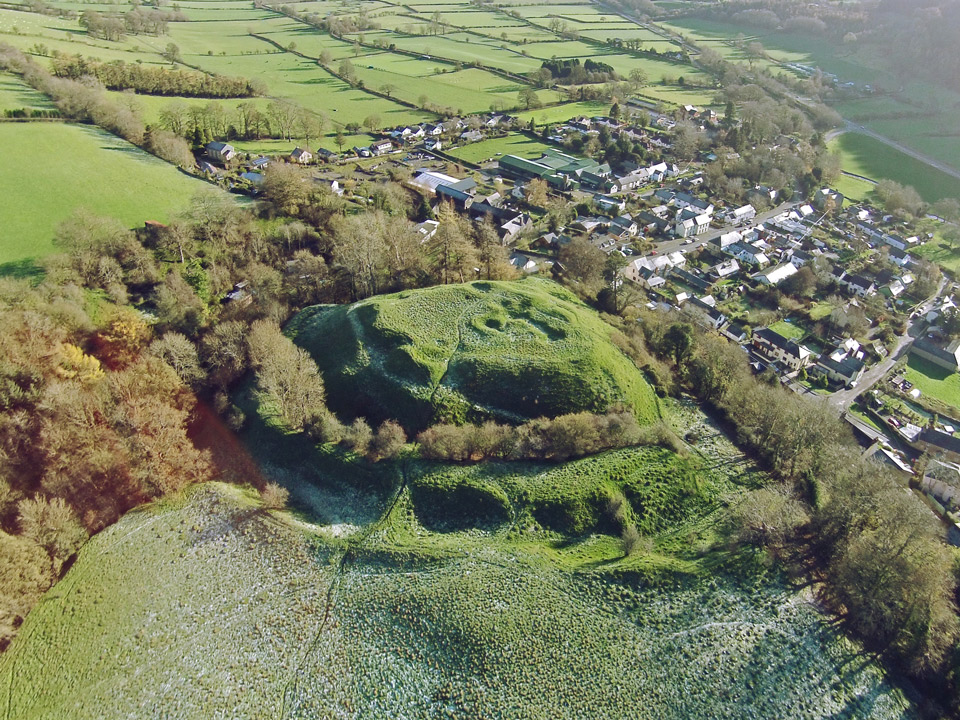Radnor Castle
New Radnor in Powys lies just off the A44 about 20 miles west of Leominster and 20 miles east of Rhayader. The castle is in an elevated position above the village.
SO 213610
Article by Paul Remfry
For more information and photographs visit http://www.castlewales.com/radnor.html
There has been much argument over the age of Radnor castle. Traditionally it is the successor of Old Radnor castle or Castell Nimble. Tradition in this case is undoubtedly wrong. Radnor castle was possibly founded as early as the days of William Fitz Osbern as part of the Herefordshire Marches (1067-71) and it is certain that the Radnor plain to the east of Radnor castle was considered English land in 1086. This would suggest a castle constructed by this date. Certainly by 1093 the fortress was operational and probably a base for the owning family of Braose in their conquest of the nearby cantref* of Buellt.


After the death of King John, Reginald Braose (d1228) rebuilt Radnor castle. It was destroyed again in 1231 by Prince Llywelyn ab Iorwerth (d1240). Two years later, Richard Earl of of Cornwall (d1272) rebuilt the fortress at his own cost and in the 1240’s it passed to Ralph Mortimer of Wigmore (d1246) to guard for his son and heir, Roger Mortimer (d1282) who had married the Braose heiress, Matilda. In 1264 Prince Llywelyn ap Gruffydd (d1282) allied with the sons of Simon de Montfort, Earl of Leicester (d1265) sacked Radnor castle. Once more the castle was rebuilt, though this proved to be its final destruction in battle. Radnor is obviously the most unlucky castle in Wales: it changed hands twelve times in only eighty years! On four of these occasions it was ‘destroyed’. In maturity the castle proved much more sedate. It was defended against Owain Glyndwr, but the story of the castle’s fall and the massacre of the garrison in 1403 is a much later legend that has no basis in fact. Radnor castle then gently fell into decay, by 1538 only one tower remained usable and that was used as the county prison.
The castle today consists of a great ringwork set on a natural bluff overlooking the town of New Radnor. This ringwork was once heavily defended in stone and there appear to be traces of four corner towers and a twin towered gatehouse to the north. This gatehouse was further protected by a double ditch, the outermost cut of which is obviously unfinished and probably dates to the rebuilding of 1233. Beyond this is a large outer ward with foundations of a building which may have been a great hall or stables!